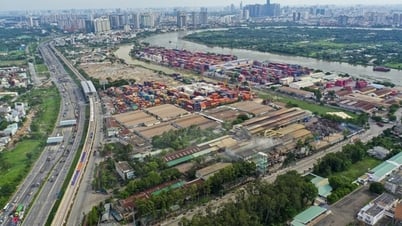Director of the Tax Department ( Ministry of Finance ) Mai Xuan Thanh has just signed and issued Decision 1378/QD-CT regulating the names, headquarters, and management areas of 350 tax agencies under 34 tax agencies of provinces and centrally run cities.
According to this decision, the names, headquarters and management areas of 350 tax bases under the tax of provinces and centrally-run cities are established uniformly nationwide. The issuance of new regulations aims to ensure uniformity in the organizational structure, in accordance with the new tax organization model according to provincial administrative boundaries.
The Decision takes effect from July 1, replacing Decision 111/QD-CT dated March 5 on the names, headquarters, and management areas of district-level tax teams under regional tax branches.

Accordingly, Ho Chi Minh City Tax is the unit with the most base taxes, with 29 units. Next is Hanoi Tax with 25 base taxes.
Cao Bang Provincial Tax and Lai Chau Provincial Tax are the two units with the least base tax, only 4 units.
Provincial and municipal tax authorities have 5 basic taxes: Dien Bien, Lang Son, Hue City and Son La.
Other provincial and municipal taxes have from 6 to 16 base taxes, including: Tuyen Quang (8 bases); Thanh Hoa (13 bases); Vinh Long (12 bases); Da Nang City (10 bases); Can Tho City (13 bases); An Giang (11 bases); Hai Phong City (14 bases).
Bac Ninh province tax (10 establishments); Dong Nai province tax (10 establishments); Gia Lai province tax (11 establishments); Dak Lak province tax (11 establishments); Dong Thap province tax (9 establishments); Quang Ninh province tax (7 establishments); Hung Yen province tax (9 establishments); Ha Tinh province tax (6 establishments); Khanh Hoa province tax (8 establishments)
Lam Dong province tax (13 establishments); Lao Cai province tax (9 establishments); Nghe An province tax (9 establishments); Ninh Binh province tax (12 establishments); Phu Tho province tax (16 establishments); Quang Ngai province tax (11 establishments); Quang Tri province tax (10 establishments); Thai Nguyen province tax (8 establishments); Ca Mau province tax (8 establishments); Tay Ninh province tax (10 establishments).
Detailed list of names, headquarters, and management areas of 350 tax establishments under provincial and municipal tax from July 1:

Source: https://vietnamnet.vn/chi-tiet-ten-tru-so-dia-ban-quan-ly-350-thue-co-so-tren-toan-quoc-tu-1-7-2417136.html










































































































Comment (0)